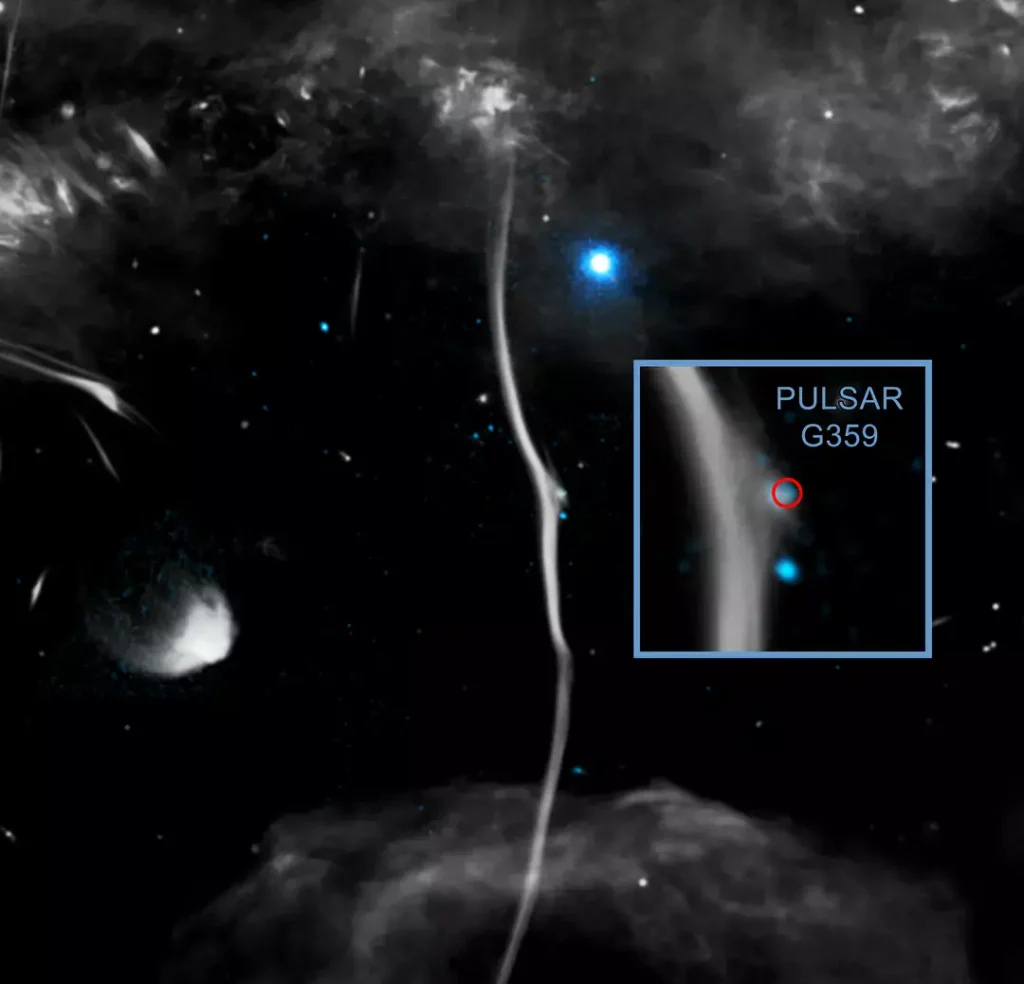
Image Shows Fracture in Milky Way’s Galactic ‘Bone’
The Milky Way galaxy, our home in the vast expanse of the universe, is a stunning sight to behold. Its spiral arms, bright stars, and swirling clouds of gas and dust have captivated human imagination for centuries. But, beneath its majestic appearance, lies a complex and dynamic structure, shaped by the forces of gravity and motion. Recently, NASA has released an image that has sent shockwaves through the scientific community, revealing a massive fracture in the “cosmic bone” of the Milky Way galaxy.
The image in question shows a gigantic structure, resembling a bone or a snake, near the center of the galaxy. This enigmatic feature is known as G359.13, and it has long fascinated astronomers. The latest image, captured by NASA’s Chandra X-ray Observatory, provides a stunning visual representation of this mysterious structure. But, what’s more remarkable is the reason behind its extraordinary appearance.
According to NASA, the “bone” has been struck by a fast-moving, rapidly spinning neutron star, or pulsar. This high-energy collision has caused a massive fracture in the structure, leaving a gaping hole in its wake. The image, which showcases the X-ray emissions from the collision, is a testament to the incredible power of astrophysical events.
Neutron stars are among the most extreme objects in the universe. Born from the collapse of massive stars, they are dense, spinning balls of hot, glowing gas. When they collide with other objects, such as the “cosmic bone” of the Milky Way, they can release enormous amounts of energy, causing spectacular distortions in the surrounding space.
The “cosmic bone” itself is a mysterious structure, comprising enormous filaments of gas and dust. These filaments are thought to be remnants of ancient star-forming regions, which have been shaped by the galaxy’s turbulent history. The G359.13 feature is one of the most prominent of these structures, and its strange appearance has long puzzled astronomers.
The Chandra X-ray Observatory, launched in 1999, has been instrumental in uncovering the secrets of the universe. With its incredible sensitivity and resolution, it has imaged some of the most distant and energetic phenomena in the cosmos. The recent image of the fracture in the “cosmic bone” is a testament to the power of this remarkable telescope.
The discovery of the fracture has significant implications for our understanding of the Milky Way galaxy. It provides valuable insights into the complex dynamics of the galaxy’s center, where gravity and motion are in a constant struggle for dominance. The collision of the pulsar with the “cosmic bone” has revealed a previously unknown mechanism, which shapes the galaxy’s structure and evolution.
As we continue to explore the universe, we are constantly reminded of its awe-inspiring beauty and complexity. The image of the fracture in the “cosmic bone” is a poignant reminder of the incredible forces that shape our cosmos. It is a testament to human curiosity and ingenuity, which continue to push the boundaries of our understanding.
In conclusion, the image of the fracture in the Milky Way’s galactic “bone” is a remarkable discovery, which has shed new light on the dynamics of our galaxy. The collision of the pulsar with the “cosmic bone” is a powerful reminder of the incredible energies at play in the universe. As we continue to explore the cosmos, we are constantly reminded of the awe-inspiring beauty and complexity of the universe we call home.
Source:
https://www.nasa.gov/missions/chandra/nasas-chandra-diagnoses-cause-of-fracture-in-galactic-bone/






